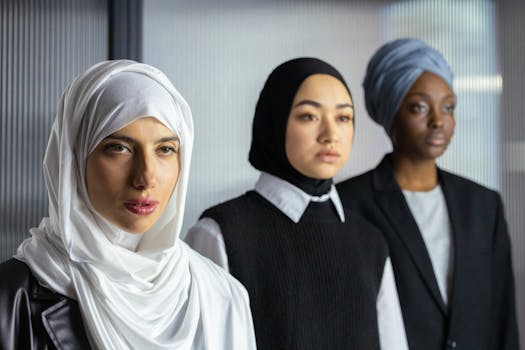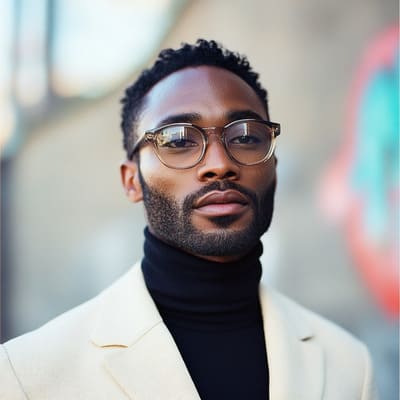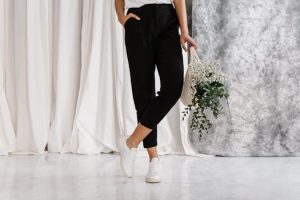The Rise of Inclusive Fashion Campaigns
Fashion has always been a reflection of society, constantly evolving and adapting to the cultural, political, and social landscape. In recent years, there has been a significant shift in the fashion industry towards inclusivity. This newfound focus on diversity and representation can be seen in the rise of inclusive fashion campaigns. From runway shows to advertising campaigns, brands are making a conscious effort to celebrate all body types, sizes, shades, and genders. This move towards inclusivity is not just a trend, but a fundamental change in the way fashion is perceived and consumed.
The Representation Revolution
For decades, the fashion industry has been criticized for its narrow beauty standards and lack of diversity. Models were expected to fit into a certain mold, with a specific body type, skin color, and age. This created an exclusivity that left many individuals feeling left out and underrepresented. However, with the rise of social media and the powerful voices of marginalized communities, brands are now listening and responding.
Celebrities as Catalysts
Celebrities play a significant role in shaping fashion trends and influencing consumer behavior. In recent years, many A-Listers have used their platform to advocate for inclusivity in the fashion industry. For example, Ashley Graham, a plus-size model and body positivity activist, launched her own swimwear line and has been featured in numerous fashion campaigns. Similarly, transgender model and activist, Leyna Bloom, became the first trans woman of color on the cover of Sports Illustrated. These trailblazers are breaking barriers and opening doors for underrepresented individuals in the fashion industry.
Impact on Brand Image
Inclusive fashion campaigns not only promote diversity and representation but also have a positive impact on a brand’s image. By showcasing a diverse range of models, brands are seen as more relatable and authentic. This resonates with consumers, especially the younger, more socially conscious generations, who value inclusivity and diversity. Brands that embrace inclusivity are not only seen as progressive and accepting but also stand out in a saturated market.
From Runway to Retail
In the past, fashion runways were exclusive events, reserved for industry insiders and elite clientele. However, with the advent of live streaming and social media, fashion shows have become more accessible to the general public. This has opened doors for more diverse models and collections to be showcased. In addition, brands are now incorporating diversity in their retail spaces, making their stores and websites more inclusive and inviting to a broader audience.
The Call for Inclusivity
The rise of inclusive fashion campaigns is not just a response to societal pressure, but also due to the changing demographics of fashion consumers. As the world becomes more interconnected, the traditional fashion consumer is no longer just a cisgender, white, thin, and able-bodied individual. Brands are realizing the importance of catering to a diverse audience if they want to remain relevant and successful in a global market.
The Influence of Gen Z
Gen Z is the most diverse and socially aware generation to date. They place a high value on inclusivity and are more likely to support brands that align with their values. According to a study by the National Retail Federation, 64% of Gen Z consumers are more likely to purchase from a company that contributes to social causes they care about. This has put pressure on fashion brands to be more inclusive, not just in their campaigns, but also in their business practices.
Consumer Backlash
Inclusivity is no longer just a trend, but an expectation. Fashion brands that do not embrace diversity and representation are likely to face backlash from consumers. In 2018, luxury brand Gucci faced criticism for featuring a white model wearing a “blackface” sweater in their campaign. This led to a boycott and calls for the brand to be more inclusive. In turn, Gucci implemented a diversity and inclusion plan in their company culture and campaigns.
Inclusive Fashion for All
The rise of inclusive fashion campaigns is a step in the right direction. The fashion industry plays a significant role in shaping societal norms and perceptions. By showcasing diverse models and celebrating all body types, sizes, and genders, fashion campaigns are promoting acceptance and representation. This not only benefits underrepresented individuals but also contributes to a more inclusive and diverse society.
Future of Fashion
Inclusivity is not just a trend but a movement that is here to stay. Consumers are demanding more representation and brands are listening. In the future, we can expect to see even more diversity in fashion campaigns, with a greater emphasis on celebrating individuality and breaking traditional beauty standards. The rise of inclusive fashion campaigns is just the beginning of a more inclusive and diverse fashion industry.
The fashion industry has the power to influence and shape societal norms and perceptions. By embracing inclusivity and diversity in their campaigns, brands are not only promoting acceptance and representation, but also staying relevant and appealing to a broader audience. The rise of inclusive fashion campaigns is not just a trend, but a significant step towards a more inclusive and diverse future in fashion.










